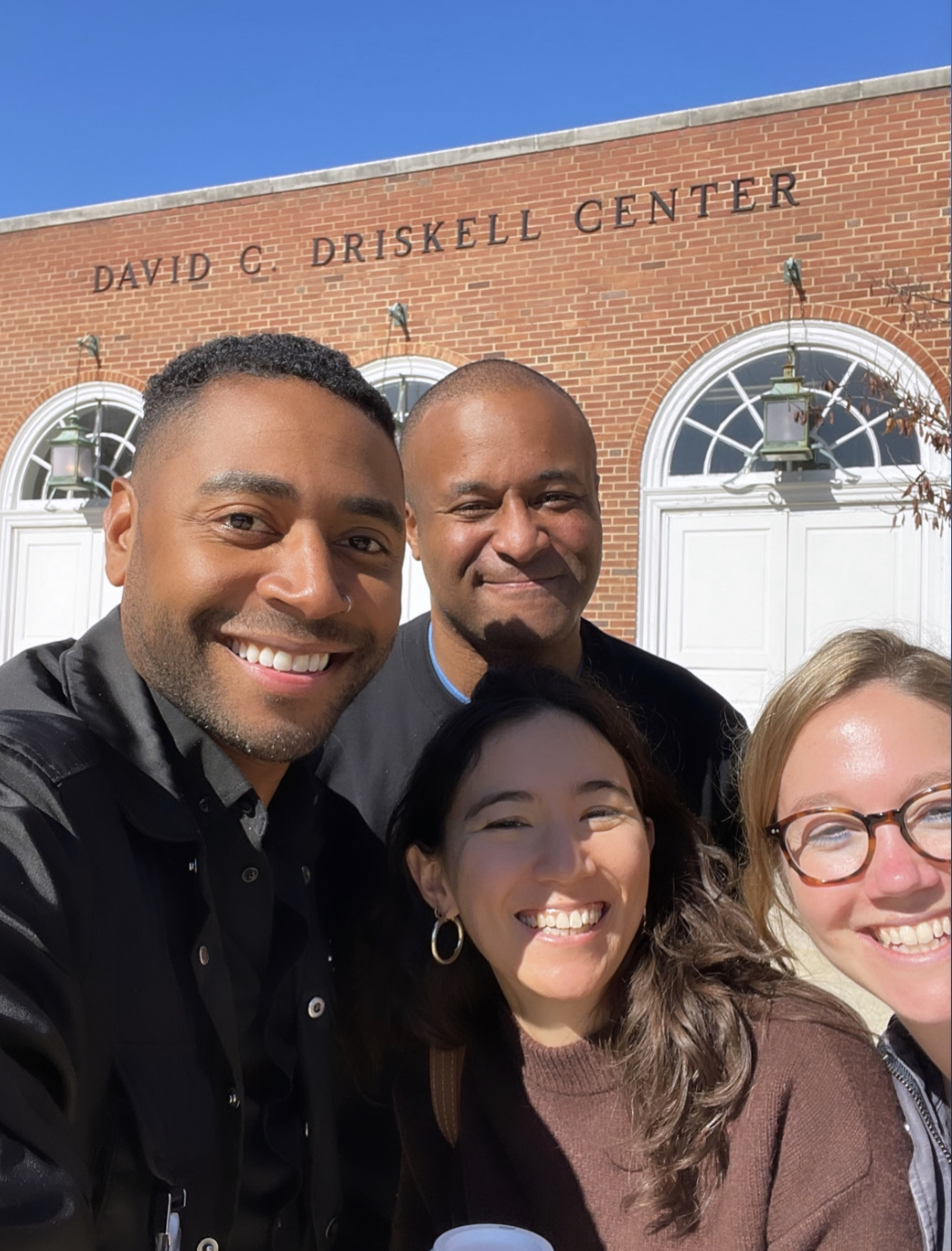Driskell Center 2023-24 Archive Research Fellowship
December 22, 2023
By Terrence Phearse, Cohort ’21
As I step into the halls of the David C. Driskell Center at the University of Maryland College Park, I am keenly aware of the immense privilege as a recipient of their inaugural Archives Research Fellowship. This fellowship allows me to research the recently acquired Michael D. Harris Collection and adjacent collection holdings. These collections are a trove of papers, documents, photographs, art works, objects, ephemera, and writings that encapsulate the lives and work of individuals whose impact reverberates through the worlds of visual culture and scholarship.
Michael D. Harris, in particular, a polymath whose practice knew no bounds, was not just an artist, writer, curator, poet, and scholar but also a brilliant photographer. His work critically examines how Black people, communities, and cultures are represented in art and daily life. Harris’s academic journey was a testament to his insatiable thirst for knowledge, culminating in six degrees that spanned a diverse array of subjects, from studio art and art history to philosophy and African American and African studies–a path that deeply inspires me. Harris was known to some as “Olusina,” a Yoruba name that resonates with profound significance: “The Lord opens the way.” His proficiency in the Yoruba language was a testament to his deep-rooted connection to African heritage and culture.
Yet, it is not just the scholar in Harris that beckons us; it is the artist, the creator, and the curator. As I embark on this journey through the Michael D. Harris Collection, I am met with materials spanning two continents and several decades: correspondence, taped interviews, transcriptions, photographs, DVDs, field notes from his studies in Ile-Ife, Nigeria, publications, unpublished writings, poetry, records of curatorial practice, and his participation in AfriCOBRA - a symphony of documents that trace the evolution of a scholar, an artist, a curator, and above all, a visionary.
With each letter turned, and each photograph examined, I am charged with ensuring the narrative of Michael D. Harris endures from what interests me most: philosophical genealogy, phenomenology, and the Black image. My research project seeks to be what I posit as a Black visual hermeneutical view into this archival collection and related images found in the Driskell Center’s art collection.

As the days in the archive unfold, the papers reveal their secrets. I am filled with a sense of purpose and gratitude. This fellowship is not just an academic pursuit; it is a duty to honor the life and work of a man whose impact transcends time and space. Through meticulous research and collaboration with fellow scholars Maya Harakawa, Spencer Coffey, and Sarah Battle, I hope to unearth the hidden gems within this collection, breathing life into the story of Michael D. Harris once more so that his legacy may continue to illuminate the path forward for generations to come, as did David C. Driskell.
